Paving Around Pools: What to Consider for Slip-Resistance and Aesthetics
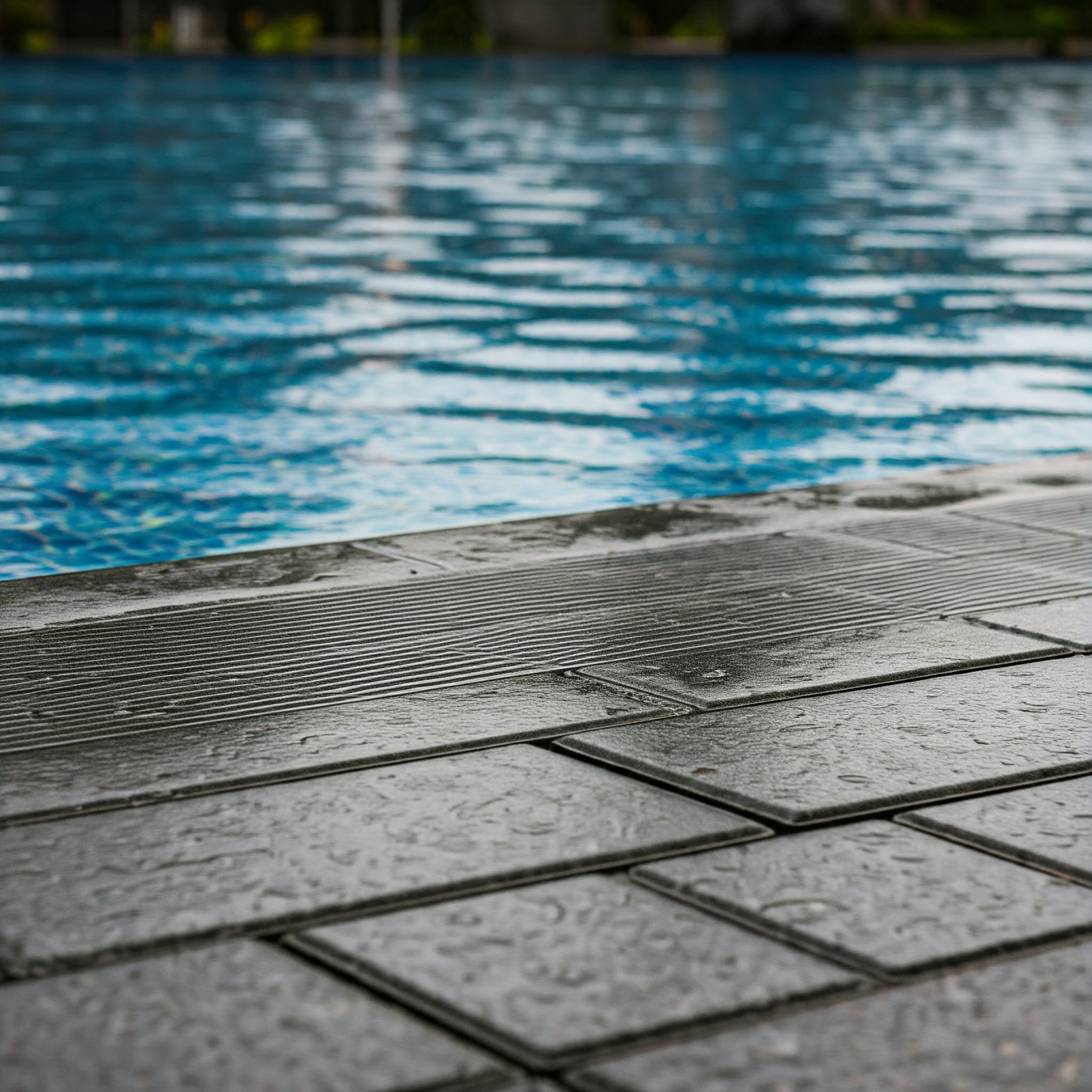
Creating a poolside space that’s both safe and visually appealing requires thoughtful selection of paving materials. From preventing slips to ensuring the surface doesn’t overheat, these considerations go beyond aesthetics to enhance the usability and longevity of your pool area. Let’s explore key factors like slip-resistance, heat absorption, water drainage, and how to coordinate paver colors with pool design.
By considering these aspects, you can create a poolside area that’s functional, safe, and attractive, enhancing both the aesthetic appeal and usability of your outdoor space for years to come.
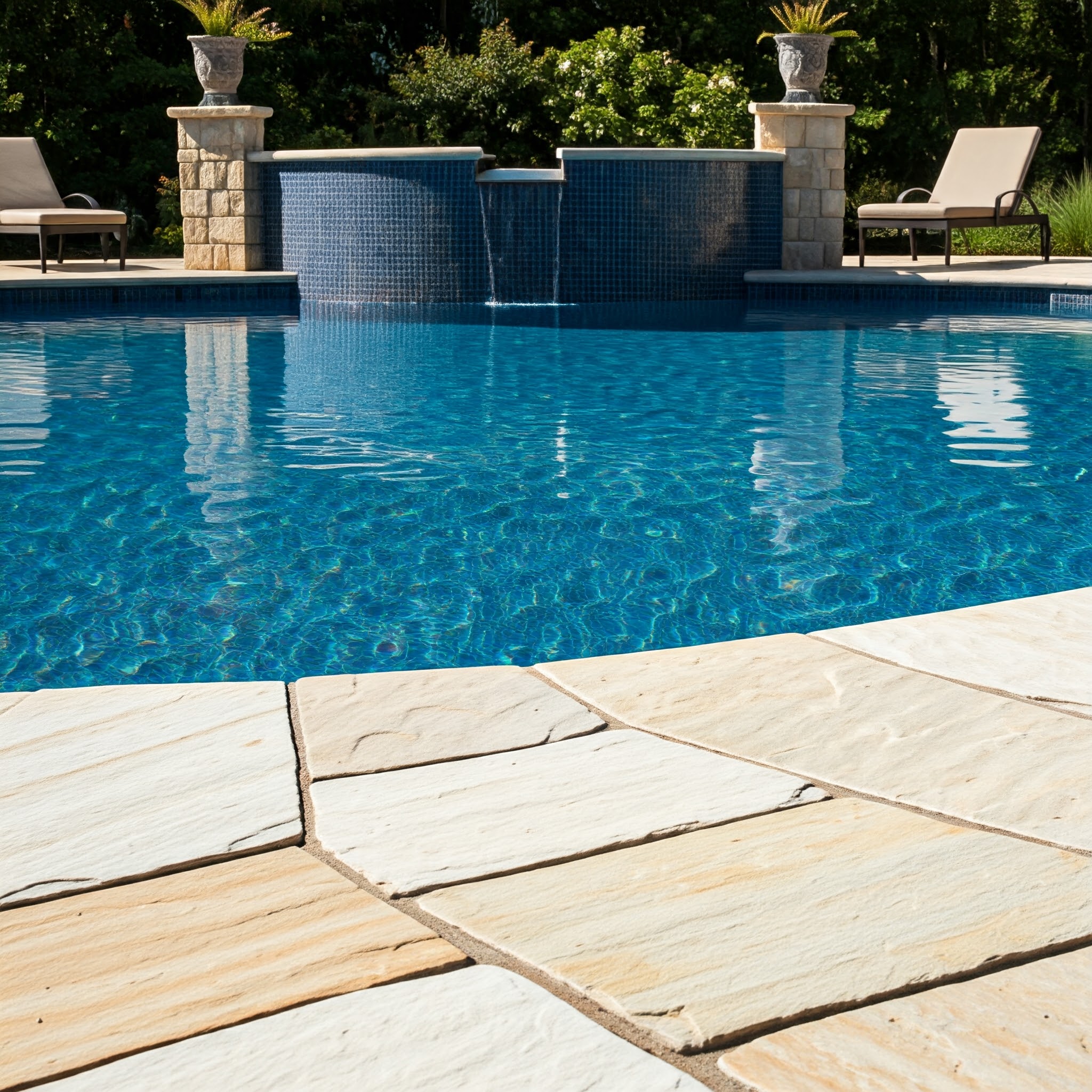
1. Slip-Resistant Materials
Safety is crucial when it comes to poolside paving. Look for materials that have a natural texture or a slip-resistant finish, especially when wet. Some great options include:
- Textured Concrete: Concrete with a brushed or textured finish offers an affordable, durable solution that minimizes the risk of slips.
- Porcelain Tile: Choose slip-rated porcelain tiles specifically designed for pool areas; they combine a sleek look with excellent traction.
- Natural Stone: Stones like travertine, sandstone, and limestone have natural texture and slip-resistance, which make them popular for pool areas.
- Rubber-Based Pavers: For a modern option, rubber pavers provide a soft, slip-resistant surface that is safe for poolside areas and offers a comfortable feel underfoot.
2. Heat Absorption
In hot weather, paving materials can quickly absorb and retain heat, making the surface uncomfortable to walk on. Certain materials are better for keeping cool under the sun:
- Light-Colored Pavers: Choose lighter colors like ivory, beige, or light gray, which reflect heat better than darker tones.
- Travertine: A popular natural stone choice, travertine stays cooler than many other materials, even under direct sunlight.
- Concrete with Reflective Finish: Adding reflective additives to concrete pavers can help keep the surface temperature lower.
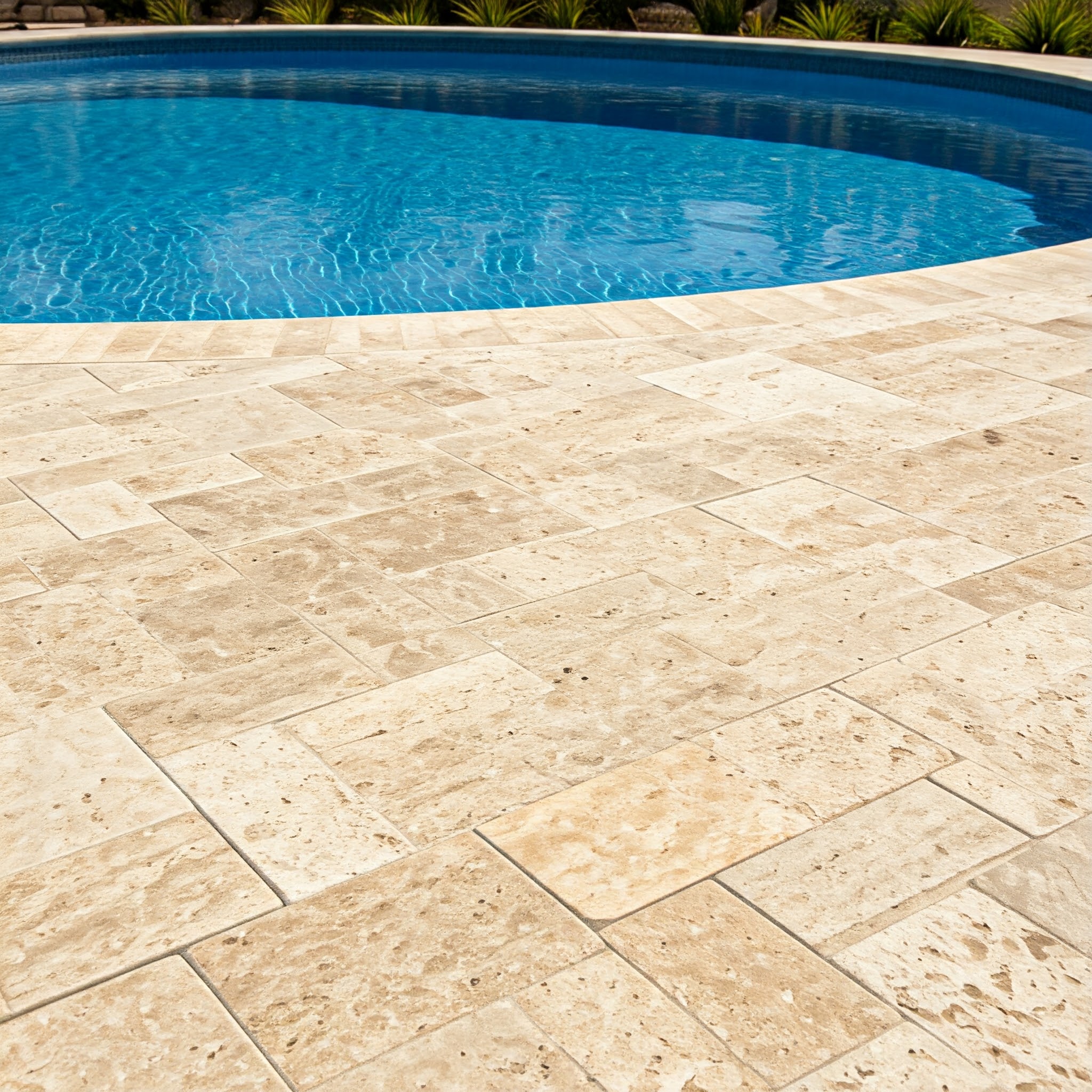

3. Water Drainage
Pool areas are often wet, so efficient water drainage is essential to avoid standing water and ensure a safe, dry surface. Some drainage-friendly materials include:
- Permeable Pavers: These pavers allow water to drain through the gaps, reducing water buildup and enhancing safety.
- Natural Stone and Textured Concrete: Both provide good water resistance and prevent excessive pooling.
- Drainage Channels and Sloping: Regardless of the material chosen, ensure the area is graded to direct water away from the pool edge and into a drainage channel to keep surfaces safe and dry.
4. Coordinating with Pool Design
For a cohesive look, consider how your paving colors and patterns blend with the overall pool design. Key design tips include:
- Complementary Colors: Neutral tones like beige, gray, and soft browns tend to blend well with poolside areas, creating a relaxing atmosphere without distracting from the water’s natural beauty.
- Contrasting Edges: Adding a contrasting border around the pool can create definition and frame the space nicely, especially in smaller pool areas.
- Natural or Earthy Tones: Many homeowners prefer tones that mimic natural surroundings. Colors like sand, charcoal, and slate can enhance a tranquil, spa-like atmosphere.
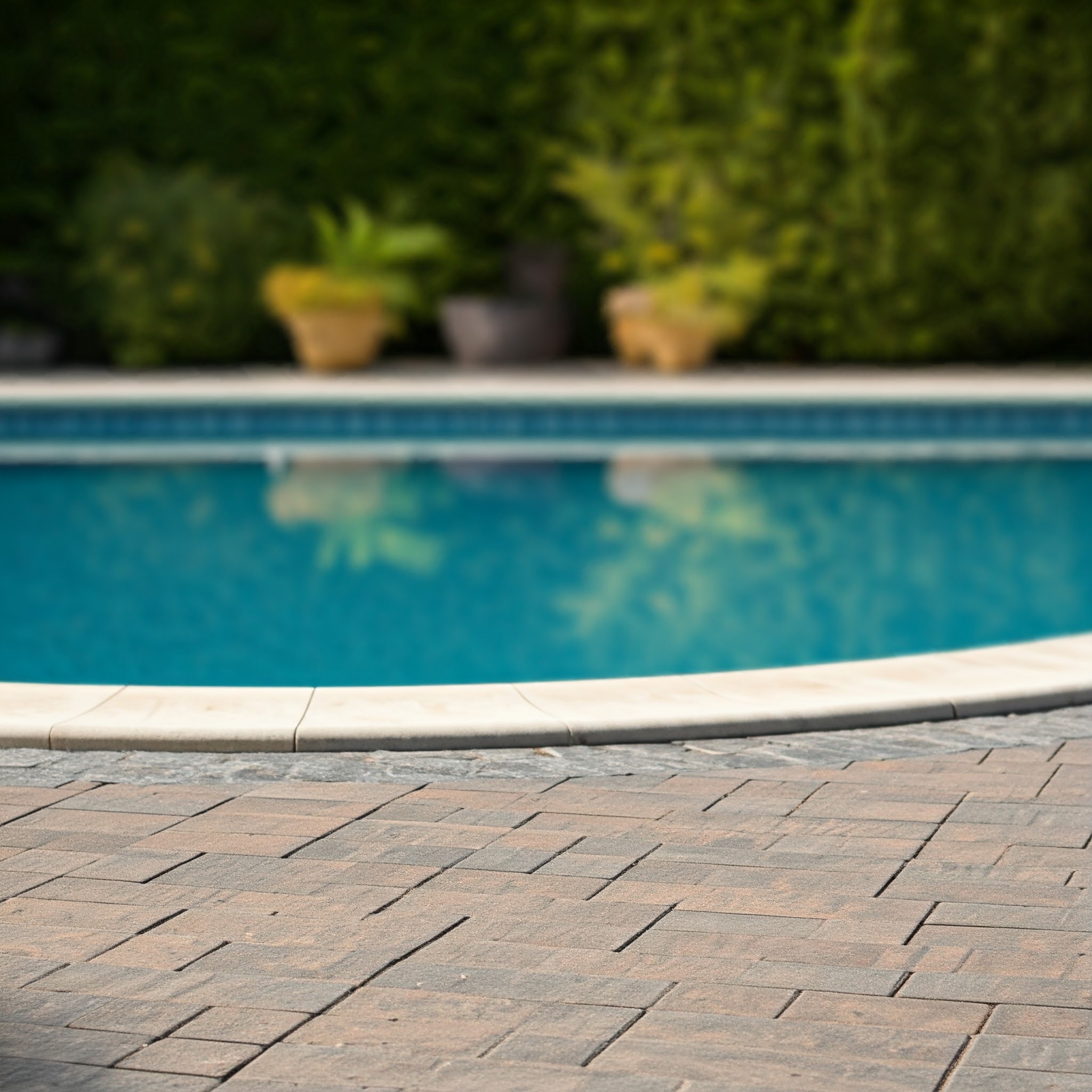
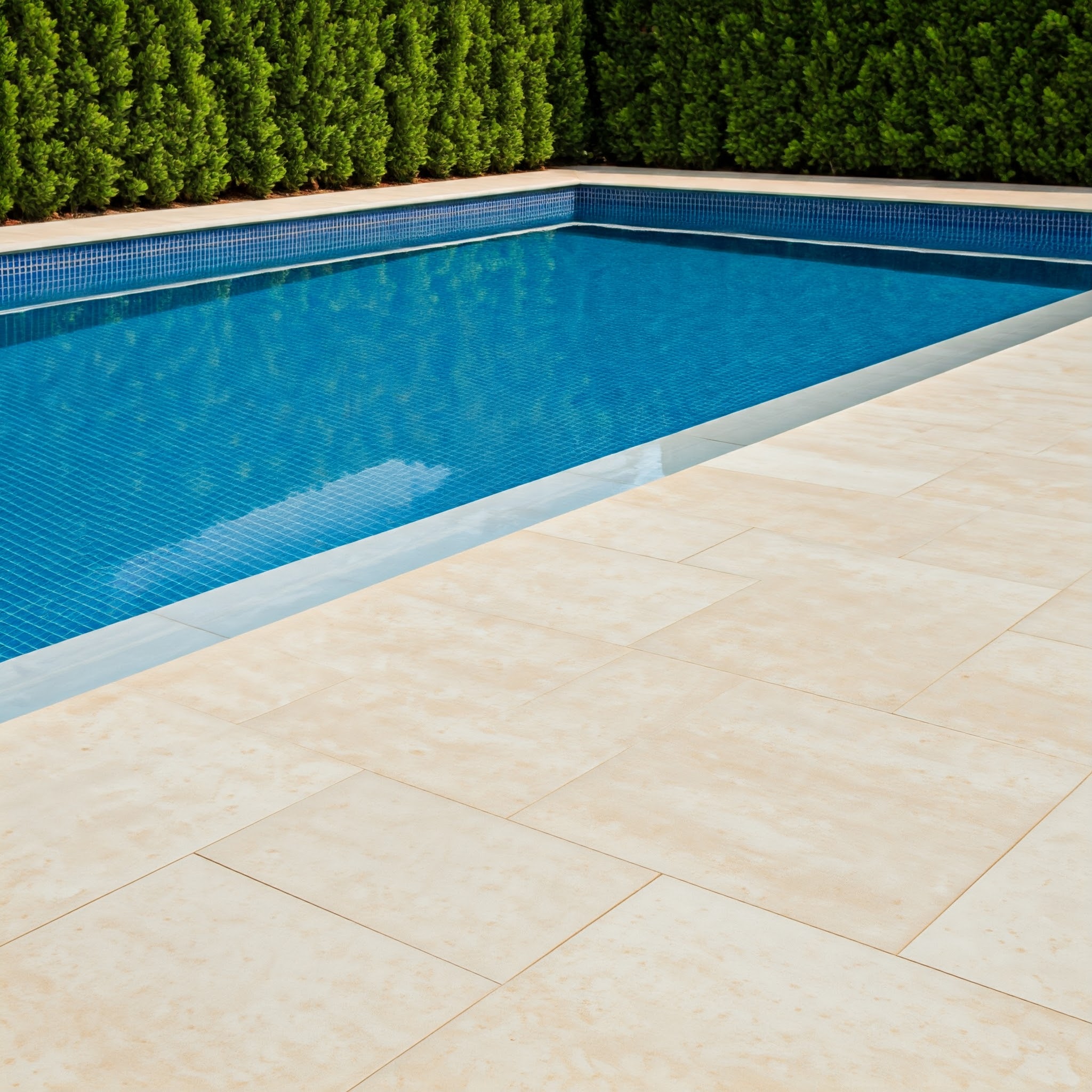
Pro Tip: Choosing Fade-Resistant Colors
When selecting colors, opt for tones that resist fading due to pool chemicals and harsh sunlight. Here are a few tips:
- Porcelain Tiles with UV-Resistant Finish: High-quality porcelain tiles often come with finishes that protect against both chemical and UV damage.
- Natural Stone with Sealant: Sealants for natural stone can help preserve color integrity and protect against sun bleaching.
- Concrete with Integral Color: Adding color to the concrete mixture, rather than using surface paint, ensures longer-lasting hues that withstand chemical exposure and UV rays.